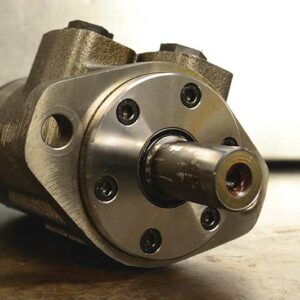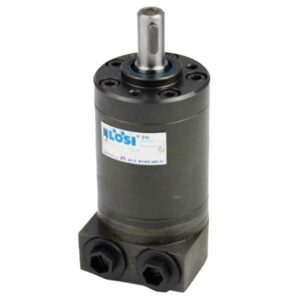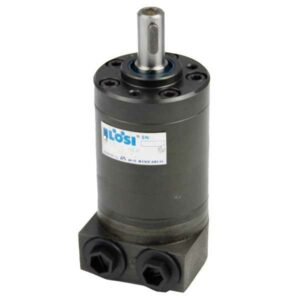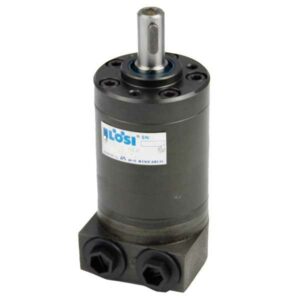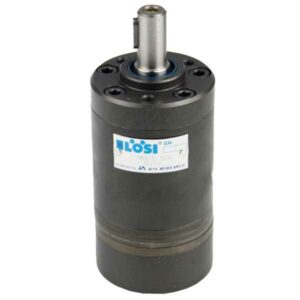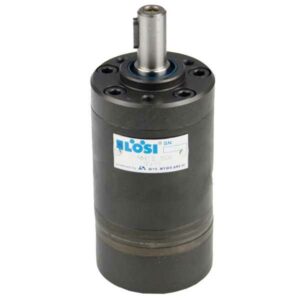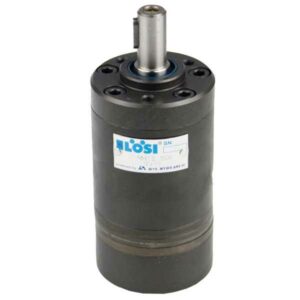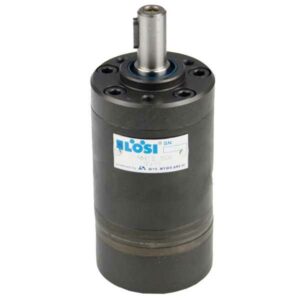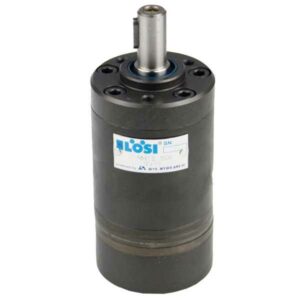Hydraulic motors
HYDRAULIC MOTORS AND THEIR FUNCTION
A Hydraulic motor, also called Hydromotor, has the task of converting hydraulic energy (pressure × volume) into mechanical work. There are a number of different types, which can be roughly divided into constant and variable speed motors.
Hydrostatic drives have a fixed relationship between flow rate and speed, but can be switchable.
Sub-Categories for hydraulic motors
WHAT IS THE FUNCTION OF A HYDRAULIC MOTOR?
The main function of the motor is to convert hydraulic energy into mechanical work.

Switching symbol of a hydraulic motor. Source: https://de.wikipedia.org/wiki/Hydraulikmotor
WHAT TYPES OF MOTORS ARE AVAILABLE?
A distinction is made between axial piston motors, radial piston motors, geared motors, vane motors and gerotor motors.
IN WHICH INDUSTRIES ARE THEY USED?
Wherever a rotary drive is required. Applications include plastic injection molding machines, sweepers, construction equipment wheel drives, conveyor belt drives, tunnel boring machines and many more.
WHAT ARE THE CRITERIA FOR THE SELECTION OF THE MOTOR?
The choice of the type used depends on the required drive speed or torque requirements. It is also important to note whether the motor is to be used in an open or closed hydraulic circuit.
HOW TO ADJUST THE SPEED?
Some hydraulic motors (e.g. axial piston motors and radial piston motors) are adjustable, whereby the speed of the motor can be set directly. Others require the use of additional hydraulic valves (e.g. flow control valves).
Hydraulic Motors – Current Sales
-
 EPMM-S 32 CK Hydraulikmotor252,44 €
EPMM-S 32 CK Hydraulikmotor252,44 €zzgl. Versandkosten
-
 EPMM-S 8 CK Hydraulikmotor240,36 €
EPMM-S 8 CK Hydraulikmotor240,36 €zzgl. Versandkosten
-
 EPMM-S 40 CK Hydraulikmotor276,80 €
EPMM-S 40 CK Hydraulikmotor276,80 €zzgl. Versandkosten
-
 EPMM-S 50 CK Hydraulikmotor309,60 €
EPMM-S 50 CK Hydraulikmotor309,60 €zzgl. Versandkosten
-
 EPMM 50 CK Hydraulikmotor309,60 €
EPMM 50 CK Hydraulikmotor309,60 €zzgl. Versandkosten
-
 EPMM 40 CK Hydraulikmotor269,84 €
EPMM 40 CK Hydraulikmotor269,84 €zzgl. Versandkosten
-
 EPMM 32 CK Hydraulikmotor258,96 €
EPMM 32 CK Hydraulikmotor258,96 €zzgl. Versandkosten
-
 EPMM 20 CK Hydraulikmotor254,84 €
EPMM 20 CK Hydraulikmotor254,84 €zzgl. Versandkosten
-
 EPMM 12,5 CK Hydraulikmotor250,68 €
EPMM 12,5 CK Hydraulikmotor250,68 €zzgl. Versandkosten


